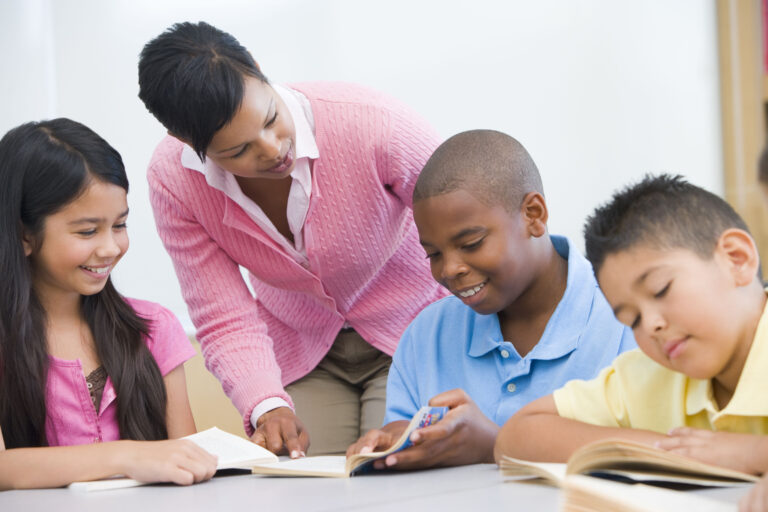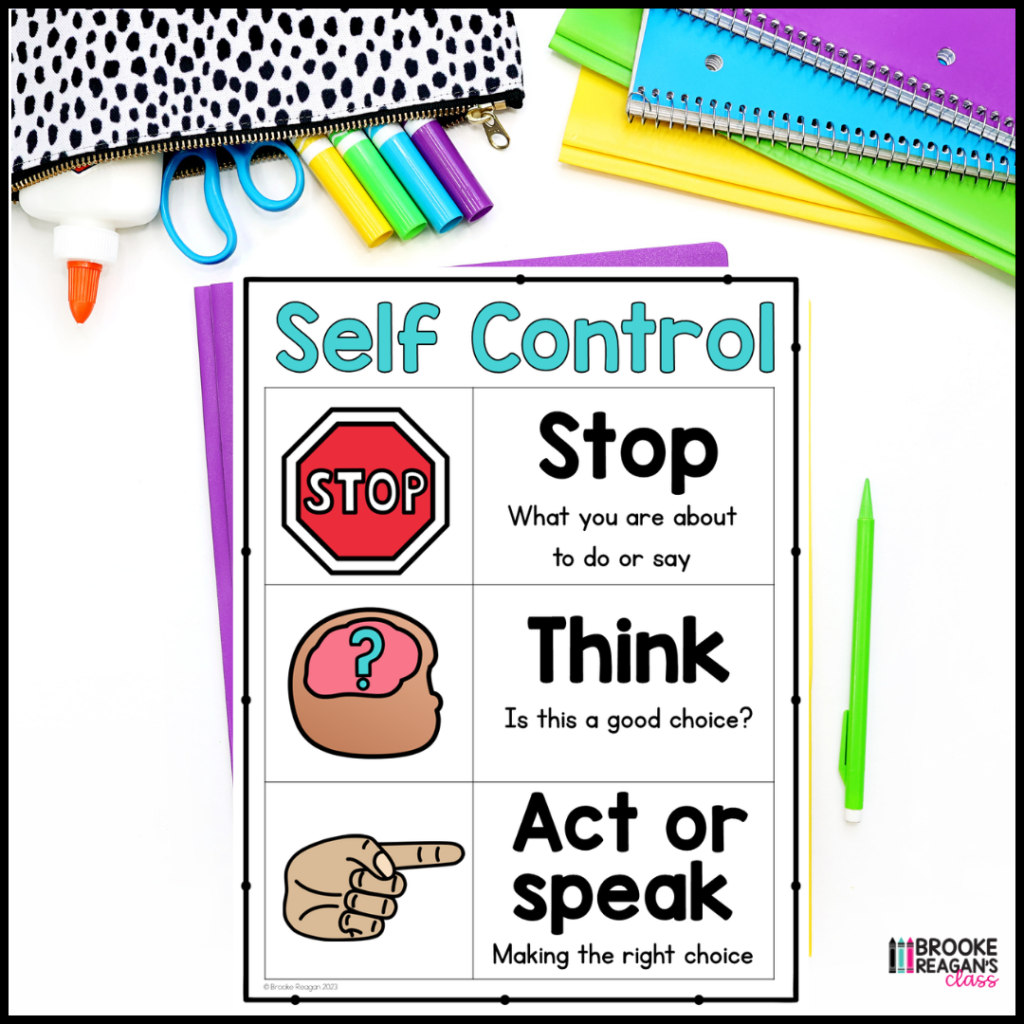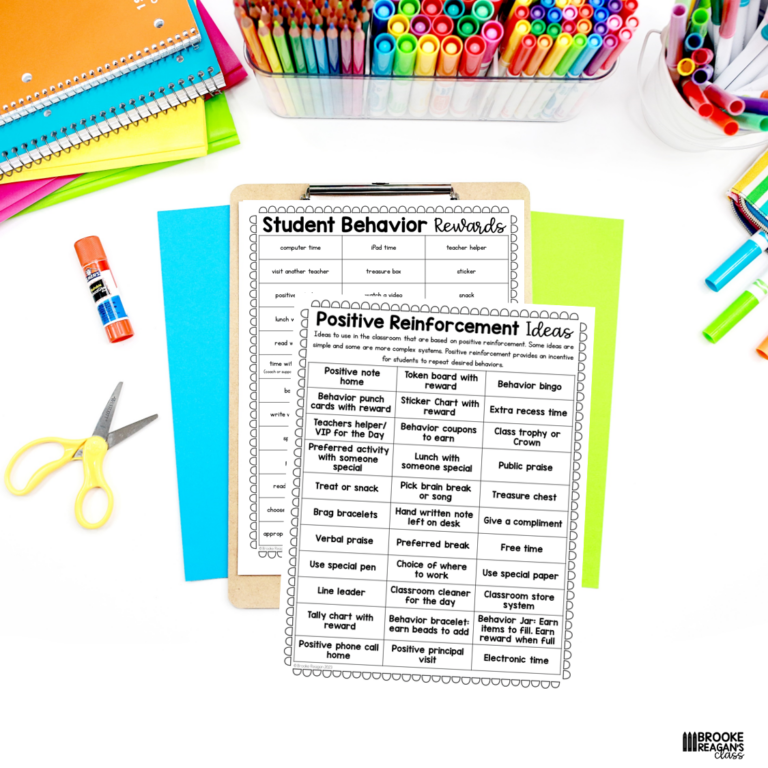

Teaching self control to kids can often times become a tricky topic. When a child hears, “Use self control”, do they even know what that means? So often we expect kids to know exactly what we mean or how to behave, but we fall short in our teaching and explanation.
We cannot expect a child to follow behavior expectations we have set without teaching them first. When I say teaching, I don’t mean just explaining what it is, I mean explicitly teaching and allowing them time to practice it correctly.
When I teach self control I break it down into three actionable steps, STOP, THINK, AND THEN ACT. When given simple language and actionable steps, this heightens a child’s ability to use this when faced with a temptation or impulse behavior.

However, simply teaching self-control through words is just the start. We must also model the behavior we want to see in children. Children are highly observant, and they learn by imitating the actions of those around them. Therefore, it is crucial that we demonstrate self-control and use visuals as reminders.

Positive reinforcement is another valuable tool in teaching self-control. When children exhibit self-control and make thoughtful choices, it is important to acknowledge and praise their efforts. This positive reinforcement not only encourages them to continue practicing self-discipline but also boosts their self-esteem and confidence in their abilities. By focusing on their strengths and celebrating their success. You can use positive reinforcement in the classroom in many ways. Read more on positive reinforcement in my blog post HERE.

When teaching self control, the use of a social story is vital. Social stories are powerful tools that can help children understand and navigate social situations, emotions, and behaviors. Furthermore, social stories provide a framework for teaching and reinforcing positive behavior. The social story shown above it an easy to use and understand social story about self control. Depending upon a the child’s reading level and abilities, the social story can be read to them or they can read the social story. A b&w student copy is key so they can color, paint or add to their social story. This gives them power and independence in their learning.

Incorporating social stories and visuals into the daily routine of children can be a powerful tool for instilling self control and setting them up for success. Through understanding the power of social stories and creating engaging visuals, parents and educators have the ability to empower young ones with the skills they need to overcome challenges and achieve their goals. By starting to implement these techniques today, we can witness the positive impact it has on the development of self control in kids.
Click HERE to grab your own copy of my Self Control Social Story that included visuals and activities for teaching kids about self control.
Also grab your freebie below for a visual for self control!

Sign up to receive over 35 ready to use student rewards to boost motivation, promote positive behavior and create a fun learning environment.